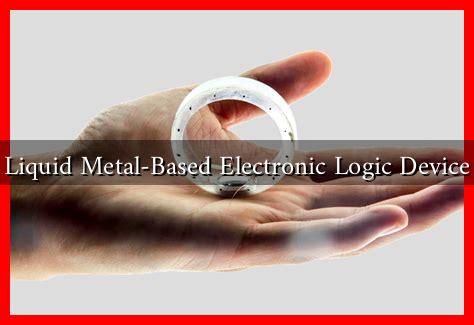-
Table of Contents
Liquid Metal-Based Electronic Logic Device
Electronic devices have become an integral part of our daily lives, from smartphones to laptops to smart home appliances. The demand for faster, smaller, and more efficient electronic devices has led to the exploration of new materials and technologies. One such emerging technology is the liquid metal-based electronic logic device, which shows great promise in revolutionizing the field of electronics.
What is a Liquid Metal-Based Electronic Logic Device?
A liquid metal-based electronic logic device is a type of electronic device that utilizes liquid metal as a key component in its operation. Liquid metals are metals that are in a liquid state at room temperature, such as gallium and its alloys. These materials have unique properties that make them ideal for use in electronic devices, including high electrical conductivity, low melting point, and flexibility.
How Does it Work?
The operation of a liquid metal-based electronic logic device is based on the manipulation of the flow of liquid metal through microchannels or electrodes.
. By applying a voltage or current to the device, the flow of liquid metal can be controlled, allowing for the creation of logic gates and circuits. This technology enables the development of flexible and reconfigurable electronic devices that can adapt to different applications.
Advantages of Liquid Metal-Based Electronic Logic Devices
- High electrical conductivity: Liquid metals have excellent electrical conductivity, making them ideal for use in electronic devices.
- Low melting point: The low melting point of liquid metals allows for easy manipulation and reconfiguration of electronic circuits.
- Flexibility: Liquid metal-based devices can be made flexible, enabling the development of wearable electronics and other innovative applications.
- Reconfigurability: Liquid metal-based logic devices can be reconfigured on-the-fly, allowing for dynamic changes in circuit functionality.
Applications of Liquid Metal-Based Electronic Logic Devices
The potential applications of liquid metal-based electronic logic devices are vast and diverse. Some of the key areas where this technology could have a significant impact include:
- Flexible electronics: Liquid metal-based devices can be integrated into flexible substrates, enabling the development of bendable and stretchable electronics.
- Reconfigurable circuits: The ability to reconfigure circuits on-the-fly makes liquid metal-based devices ideal for applications where dynamic changes in functionality are required.
- Biomedical devices: Liquid metal-based electronics could be used in biomedical devices for monitoring and controlling biological processes.
Case Study: Liquid Metal-Based Reconfigurable Antenna
One example of a practical application of liquid metal-based electronic logic devices is in the development of reconfigurable antennas. Researchers have demonstrated the use of liquid metal-based circuits to create antennas that can change their operating frequency on-demand. This technology could have significant implications for wireless communication systems, where the ability to adapt to changing conditions is crucial.
Conclusion
The development of liquid metal-based electronic logic devices represents a significant advancement in the field of electronics. With their unique properties and potential applications, these devices have the potential to revolutionize the way we think about electronic circuits and systems. As researchers continue to explore the capabilities of liquid metals in electronics, we can expect to see even more innovative and groundbreaking technologies emerge in the near future.





